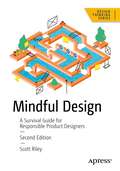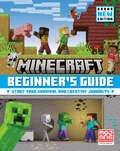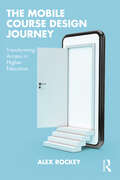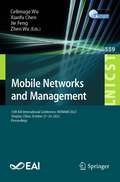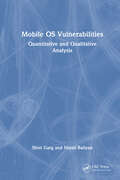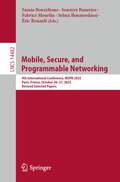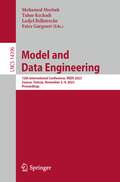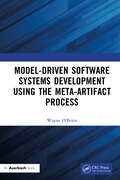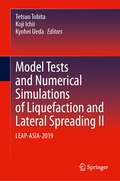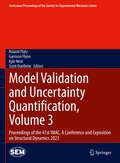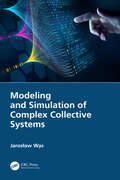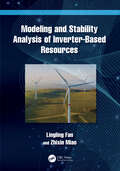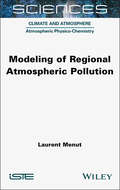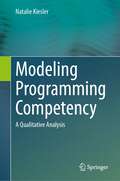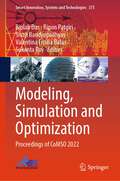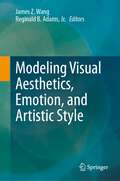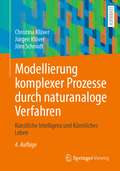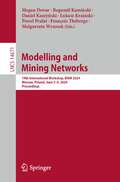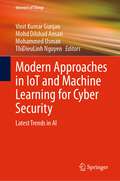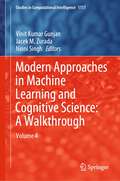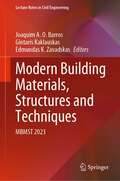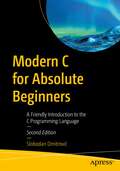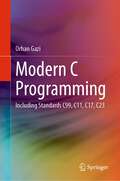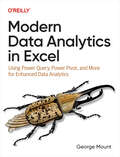- Table View
- List View
Mindful Design: A Survival Guide for Responsible Product Designers (Design Thinking)
by Scott RileyLearn to create seamless designs backed by a responsible understanding of the human mind. This new edition is fully updated and reworked to employ a realistic, challenging, and practical approach to interface design, presenting state of the art scientific studies in behavioral sciences, interface design and the psychology of design. All with modern, up-to-date examples and screenshots. The practical portion of this edition has been completely reworked, giving you the chance to follow along with a real, proven design process that has produced several successful products imbued with the principles of mindful, responsible design.You'll examine how human behavior can be used to integrate your product design into lifestyle, rather than interrupt it, and make decisions for the good of those that are using your product. You will also learn about the neurological aspects and limitations of human vision and perception; about our attachment to harmony and dissonance; and about our brain’s propensity towards pattern recognition and how we perceive the world around us. In the second half of the book, you’ll follow along with the key phases of a design project, implementing what you have learned in an end-to-end, practical setting. Design is a responsibility, but not enough designers understand the human mind or the process of thought. Mindful Design, Second Edition introduces the areas of brain science that matter to designers, and passionately explains how those areas affect each human’s day-to-day experiences with products and interfaces, providing a battle-tested toolkit to help you make responsible design decisions. What You'll Learn Review how attention and distraction work and the cost of attentional switchingUse Gestalt principles to communicate visual groupingEnsure your underlying models make sense to your audienceUse time, progression, and transition to create a compositionCarefully examine controlling behavior through reductionist and behaviorist motivation concepts Apply the theoretical knowledge to practical, mindful interface design Who This Book Is For The primary audience for this book is professional designers who wish to learn more about the human mind and how to apply that to their work. The book is also useful for design-focused product owners and startup founders who wish to apply ethical thinking to a team, or when bootstrapping their products. The secondary audience is design students who are either studying a ‘traditional’ visual design course, or a UX/interaction design course who have a desire to learn how they might be able to apply mindful design to their early careers. Finally, a tertiary audience for this book would be tutors involved in teaching design, or peripheral, courses who may wish to incorporate its teachings into their lectures, workshops or seminars.
Minecraft: Beginner's Guide (Minecraft)
by Mojang AB The Official Minecraft TeamDive into Minecraft headfirst with this all-new beginner&’s guide that will teach you everything you need to know for starting your Minecraft journey, whether that be in Survival mode or Creative. Are you new to Minecraft or still not quite getting the hang of it? Then this book is for you! Join characters such as Miss Hap, Sir Vival and Bill Ding on an adventure through the Overworld, to discover how you can ace your early game.Learn everything from what happens when you die and how to avoid it to how to feed yourself and where to find the cutest mobs. So what are you waiting for? Pick up the book and start your epic adventure!Full of fun and humor, this guide is perfect for kids of all ages.
The Mobile Course Design Journey: Transforming Access in Higher Education
by Alex RockeyThe Mobile Course Design Journey provides practical strategies to college and university educators and faculty support professionals looking to develop accessible mobile learning experiences. Given the near-ubiquity of mobile device ownership today, creating courses that can be completed entirely on a mobile device is essential to captivating student attention and supporting equity-minded pedagogy. This book frames effective mobile design within a continuum in which educators can make gradual yet meaningful changes to their instruction and course content while leveraging learners’ existing tools and literacies. Original, ready-to-use features such as a rubric for evaluating the mobile-friendliness of course content and assignments as well as a toolkit for leading workshops on mobile design will further help to demystify mobile learning in higher education.
Mobile Networks and Management: 13th EAI International Conference, MONAMI 2023, Yingtan, China, October 27-29, 2023, Proceedings (Lecture Notes of the Institute for Computer Sciences, Social Informatics and Telecommunications Engineering #559)
by Celimuge Wu Xianfu Chen Jie Feng Zhen WuThis book constitutes the refereed post-conference proceedings of the 13th International Conference on Mobile Networks and Management, MONAMI 2023, held in Yingtan, China, in October 2023. The 21 full papers were carefully reviewed and selected from 41 submissions. The papers are divided into groups of content as follows: Wireless Communication and Networks; Network Security and Blockchain; Image Processing and Computer Vision; Distributed Computing; Emerging Applications.
Mobile OS Vulnerabilities: Quantitative and Qualitative Analysis
by Shivi Garg Niyati BaliyanThis is book offers in-depth analysis of security vulnerabilities in different mobile operating systems. It provides methodology and solutions for handling Android malware and vulnerabilities and transfers the latest knowledge in machine learning and deep learning models towards this end. Further, it presents a comprehensive analysis of software vulnerabilities based on different technical parameters such as causes, severity, techniques, and software systems’ type. Moreover, the book also presents the current state of the art in the domain of software threats and vulnerabilities. This would help analyze various threats that a system could face, and subsequently, it could guide the securityengineer to take proactive and cost-effective countermeasures. Security threats are escalating exponentially, thus posing a serious challenge to mobile platforms. Android and iOS are prominent due to their enhanced capabilities and popularity among users. Therefore, it is important to compare these two mobile platforms based on security aspects. Android proved to be more vulnerable compared to iOS. The malicious apps can cause severe repercussions such as privacy leaks, app crashes, financial losses (caused by malware triggered premium rate SMSs), arbitrary code installation, etc. Hence, Android security is a major concern amongst researchers as seen in the last few years. This book provides an exhaustive review of all the existing approaches in a structured format. The book also focuses on the detection of malicious applications that compromise users' security and privacy, the detection performance of the different program analysis approach, and the influence of different input generators during static and dynamic analysis on detection performance. This book presents a novel method using an ensemble classifier scheme for detecting malicious applications, which is less susceptible to the evolution of the Android ecosystem and malware compared to previous methods. The book also introduces an ensemble multi-class classifier scheme to classify malware into known families. Furthermore, we propose a novel framework of mapping malware to vulnerabilities exploited using Android malware’s behavior reports leveraging pre-trained language models and deep learning techniques. The mapped vulnerabilities can then be assessed on confidentiality, integrity, and availability on different Android components and sub-systems, and different layers.
Mobile, Secure, and Programmable Networking: 9th International Conference, MSPN 2023, Paris, France, October 26–27, 2023, Revised Selected Papers (Lecture Notes in Computer Science #14482)
by Samia Bouzefrane Soumya Banerjee Fabrice Mourlin Selma Boumerdassi Éric RenaultThis book constitutes the refereed post-proceedings of the 9th International Conference on Mobile, Secure, and Programmable Networking, MSPN 2023, held in Paris, France, during October 26–27, 2023.The 15 full papers included in this book were carefully reviewed and selected from 31 submissions. They were organized in topical sections as follows vertical tools on machine leaning and artificial intelligence, network programming and Cloud computing, Industrial Internet of things, Digital Twins and Security.
Model and Data Engineering: 12th International Conference, MEDI 2023, Sousse, Tunisia, November 2–4, 2023, Proceedings (Lecture Notes in Computer Science #14396)
by Mohamed Mosbah Tahar Kechadi Ladjel Bellatreche Faiez GargouriThis volume LNCS 14396 constitutes the refereed proceedings of the 12th International Conference, MEDI 2023,in November 2023 ,held in Sousse, Tunisia. The 27 full papers were carefully peer reviewed and selected from 99 submissions. The Annual International Conference on Model and Data Engineering focuses on bring together researchers and practitioners and enabling them to showcase the latest advances in modelling and data management.
Model-Driven Software Systems Development Using the Meta-Artifact Process
by Wayne O'BrienThe importance of architecture for software systems is widely accepted, but the role of architecture in the overall development process is not so clear. Presenting an architecture-centric process, Model-Driven Software Systems Development Using the Meta-Artifact Process makes the role of architecture clear. At its core, this book is about developing software systems and, more specifically, software code. It describes three major innovations for making software, which are combined with five widely used enabling technologies, to provide a complete, hypothesis-driven software development process known as Meta-Artifact Process (MAP). Having complete requirements is essential for making good software and supports the hypothesis-driven MAP.MAP offers properties, qualities, and capabilities that help stakeholders and developers understand and reason about a domain and target systems of interest. MAP, through the central role of the Meta-Artifact and incorporating the view that a computer program is a hypothesis about the requirements, offers new ways to look at systems and their development, even changing the roles of developers and stakeholders.Recommending agile methods wherever appropriate while supporting the OMG Essence standard and working within an overarching architecture, MAP presents ways to ensure that the requirements are complete and correct. It helps to identify likely points during development to form alternative hypotheses about them. Because MAP requires an underlying software development process, it can provide that clarity to existing processes in which the organization’s developers are already proficient.This book provides concrete examples from two broad but diverse areas—Accounting Information Systems in the commercial area and a military command and control system—to show the wide applicability of MAP in both commercial and defense domains.
Model Tests and Numerical Simulations of Liquefaction and Lateral Spreading II: LEAP-ASIA-2019
by Tetsuo Tobita Koji Ichii Kyohei UedaThis open access book presents work collected through the Liquefaction Experiments and Analysis Projects (LEAP) in 2019 (LEAP-ASIA-2019) following the LEAP-UCD-2017 whose results have been published as a first volume. In addition to the research targets set in the previous one, such as the repeatability, variability, and sensitivity of lateral spreading on mildly sloping liquefiable sand, this volume includes research efforts to validate the generalized scaling law (hereafter “GSL”) for the identical prototype with the one employed in UCD-2017. In LEAP-ASIA-2019, 10 institutes around the world conducted 23 tests in total. It was the first multi-institutional attempts to investigate the validity of the generalized scaling law for the saturated sandy sloping deposit with wide range of initial conditions. The experimental data provided a unique basis for assessing the capabilities of six different simulation platforms for numerical simulation of soil liquefaction. The results of the experiments and the numerical simulations are presented and discussed in papers submitted by the project participants.
Model Validation and Uncertainty Quantification, Volume 3: Proceedings of the 41st IMAC, A Conference and Exposition on Structural Dynamics 2023 (Conference Proceedings of the Society for Experimental Mechanics Series)
by Roland Platz Garrison Flynn Kyle Neal Scott OuelletteModel Validation and Uncertainty Quantification, Volume 3: Proceedings of the 41st IMAC, A Conference and Exposition on Structural Dynamics, 2023, the third volume of ten from the Conference brings together contributions to this important area of research and engineering. The collection presents early findings and case studies on fundamental and applied aspects of Model Validation and Uncertainty Quantification, including papers on:Introduction of Uncertainty QuantificationUncertainty Quantification in DynamicsModel Form Uncertainty and Selection incl. Round Robin ChallengeSensor and Information FusionVirtual Sensing, Certification, and Real-Time MonitoringSurrogate Modeling
Modeling and Simulation of Complex Collective Systems
by Jarosław WąsProviding a comprehensive overview of the modeling of complex systems, with particular emphasis on the collective aspects of these systems, this book situates itself at the forefront of available literature. Exemplifying practically Wolfram’s theses found in A New Kind of Science, discussions center on where it is best to use a cellular automaton, when it is reasonable to use a hybrid approach, and when it is best to use a traditional method such as one based on differential equations. A range of fascinating examples are discussed, ranging from models of crowd dynamics, car traffic, downhill skiers and oil spreading across the sea surface. All are discussed and illustrated with comments. These examples explore how simple rules can create incredibly complex patterns and are used to compare cellular automata with more traditional methods. This book is of critical importance to students and lecturers interested in complex system modeling as well as containing translatable techniques that have applications in a wide range of fields
Modeling and Stability Analysis of Inverter-Based Resources
by Lingling Fan Zhixin MiaoRenewable energy sources interface with the ac grids via inverters and are termed inverter-based resources (IBRs). They are replacing traditional fossil fuel-based synchronous generators at a dazzling speed. In turn, unprecedented dynamic events have occurred, threatening power grid reliability. Modeling and Stability Analysis of Inverter-Based Resources provides a fundamental understanding of IBR dynamics. Developing reliability solutions requires a thorough understanding of challenges, and in this case, IBR-associated dynamics. Modeling and stability analysis play an indispensable role in revealing a mechanism of dynamics. This book covers the essential techniques of dynamic model building for IBRs, including type-3 wind farms, type-4 wind farms, and solar photovoltaics. Besides modeling, this book offers readers the techniques of stability analysis. The text includes three parts. Part 1 concentrates on tools, including electromagnetic transient simulation, analysis, and measurement-based modeling. Part 2 focuses on IBR modeling and analysis details. Part 3 highlights generalized dynamic circuit representation—a unified modeling framework for dynamic and harmonic analysis. This topic of IBR dynamic modeling and stability analysis is interesting, challenging, and intriguing. The authors have led the effort of publishing the 2020 IEEE Power and Energy Society’s TR-80 taskforce report “Wind Energy Systems Subsynchronous Oscillations: Modeling and Events,” and the two taskforce papers on investigation of real-world IBR dynamic events. In this book, the authors share with readers many insights into modeling and analysis for real-world IBR dynamic events investigation.
Modeling of Regional Atmospheric Pollution
by Laurent MenutThis book describes the main concepts used to develop and implement chemistry-transport models to calculate the evolution of regional air pollution. Since physico-chemical principles are already widely presented in various works, the perspective chosen for this book concerns the modeling of these processes. As modeling can be a simplification of reality in a particular study framework, we will try to show whether the processes represented are well modeled or not. For each process, we will discuss the simplifying assumptions that have been made, the various possible ways for improvement and the impact of these simplifications on the desired results. General information on pollution is presented, followed by observations, legislation, modeling of meteorology and then chemistry-transport, anthropogenic and natural emissions, depots, validation of calculations, optimization and data assimilation.
Modeling Programming Competency: A Qualitative Analysis
by Natalie KieslerThis book covers a qualitative study on the programming competencies of novice learners in higher education. To be precise, the book investigates the expected programming competencies within basic programming education at universities and the extent to which the Computer Science curricula fail to provide transparent, observable learning outcomes and assessable competencies. The study analyzes empirical data on 35 exemplary universities' curricula and interviews with experts in the field. The book covers research desiderata, research design and methodology, an in-depth data analysis, and a presentation and discussion of results in the context of programming education. Addressing programming competency in such great detail is essential due to the increasing relevance of computing in today’s society and the need for competent programmers who will help shape our future. Although programming is a core tier of computing and many related disciplines, learning how to program can be challenging in higher education, and many students fail in introductory programming. The book aims to understand what programming means, what programming competency encompasses, and what teachers expect of novice learners. In addition, it illustrates the cognitive complexity of programming as an advanced competency, including knowledge, skills, and dispositions in context. So, the purpose is to communicate the breadth and depth of programming competency to educators and learners of programming, including institutions, curriculum designers, and accreditation bodies. Moreover, the book’s goal is to represent how a qualitative research methodology can be applied in the context of computing education research, as the qualitative research paradigm is still an exception in computing education research. The book provides new insights into programming competency. It outlines the components of programming competencies in terms of knowledge, skills, and dispositions and their cognitive complexity according to the CC2020 computing curricula and the Anderson-Krathwohl taxonomy of the cognitive domain. These insights are essential as programming constitutes one of the most relevant competencies in all computing study programs. In addition, being able to program describes the capability of solving problems, which is also a core competency in today’s increasingly digitalized society. In particular, the book reveals the great relevance of dispositions and other competency components in programming education, which curricula currently fail to recognize and specify. In addition, the book outlines the resulting implications for higher education institutions, educators, and student expectations. Yet another result of interest to graduate students is the multi-method study design that allows for the triangulation of data and results.
Modeling, Simulation and Optimization: Proceedings of CoMSO 2022 (Smart Innovation, Systems and Technologies #373)
by Biplab Das Ripon Patgiri Sivaji Bandyopadhyay Valentina Emilia Balas Sukanta RoyThis book includes selected peer-reviewed papers presented at the International Conference on Modeling, Simulation and Optimization (CoMSO 2022), organized by National Institute of Technology, Silchar, Assam, India, during December 21–23, 2022. The book covers topics of modeling, simulation, and optimization, including computational modeling and simulation, system modeling and simulation, device/VLSI modeling and simulation, control theory and applications, and modeling and simulation of energy systems and optimization. The book disseminates various models of diverse systems and includes solutions of emerging challenges of diverse scientific fields.
Modeling Visual Aesthetics, Emotion, and Artistic Style
by James Z. Wang Reginald B. Adams Jr.Modeling Visual Aesthetics, Emotion, and Artistic Style offers a comprehensive exploration of the increasingly significant topic of the complex interplay between human perception and digital technology. It embodies the cumulative knowledge and efforts of a wide array of active researchers and practitioners from diverse fields including computer vision, affective computing, robotics, psychology, data mining, machine learning, art history, and movement analysis. This volume seeks to address the profound and challenging research questions related to the computational modeling and analysis of visual aesthetics, emotions, and artistic style, vital components of the human experience that are increasingly relevant in our digitally connected world. The book's vast scope encompasses a broad range of topics. The initial chapters lay a strong foundation with background knowledge on emotion models and machine learning, which then transitions into exploring social visual perception in humans and its technological applications. Readers will uncover the psychological and neurological foundations of social and emotional perception from faces and bodies. Subsequent sections broaden this understanding to include technology's role in detecting discrete and subtle emotional expressions, examining facial neutrality, and including research contexts that involve children as well as adults. Furthermore, the book illuminates the dynamic intersection of art and technology, the language of photography, the relationship between breath-driven robotic performances and human dance, and the application of machine learning in analyzing artistic styles. This book sets itself apart with its unique multidisciplinary approach, encouraging collaboration across related domains. Packed with comprehensive tutorials, theoretical reviews, novel methodologies, empirical investigations, and comparative analyses, the book offers a rich combination of knowledge and methodologies. The book's focus on cutting-edge research not only presents the latest developments in the field but also illuminates potential paths that can lead to significant advancements in computer and robotic applications.
Modellierung komplexer Prozesse durch naturanaloge Verfahren: Künstliche Intelligenz und Künstliches Leben
by Christina Klüver Jürgen Klüver Jörn SchmidtDieses Buch ist eine Einführung in naturanaloge Techniken und verwandte formale Methoden. Zu jeder Technik werden Anwendungsbeispiele gegeben. Dargestellt werden Zellularautomaten und Boolesche Netze, Evolutionäre Algorithmen sowie Simulated Annealing, Fuzzy-Methoden, Neuronale Netze und schließlich Hybride Systeme, d.h. Koppelungen verschiedener dieser Techniken. Auf der Basis der Theorie komplexer dynamischer Systeme werden zusätzlich theoretische Grundlagen dargestellt und es wird auf die Gemeinsamkeiten der auf einen ersten Blick sehr heterogenen Techniken hingewiesen. Die Auflage wurde überarbeitet und erweitert mit aktuellen Trends wie ChatGPT.
Modelling and Mining Networks: 19th International Workshop, WAW 2024, Warsaw, Poland, June 3–6, 2024, Proceedings (Lecture Notes in Computer Science #14671)
by Megan Dewar Bogumił Kamiński Daniel Kaszyński Łukasz Kraiński Paweł Prałat François Théberge Małgorzata WrzosekThis book constitutes the refereed proceedings of the 19th International Workshop on Modelling and Mining Networks, WAW 2024, held in Warsaw, Poland, during June 3–6, 2024. The 12 full papers presented in this book were carefully reviewed and selected from 19 submissions. The aim of this workshop was to further the understanding of networks that arise in theoretical as well as applied domains. The goal was also to stimulate the development of high-performance and scalable algorithms that exploit these networks.
El modelo para ganar dinero de ChatGPT para emprendedores: Descubra los secretos para monetizar ChatGPT y obtener ingresos masivos
by John AlexanderEn la vertiginosa era digital, la clave del éxito reside en adoptar tecnologías de vanguardia. Prepárese para liberar el potencial del lenguaje y la inteligencia artificial con "Ganar dinero con Chat GPT". Esta guía indispensable le lleva en un viaje cautivador, revelando los secretos para aprovechar Chat GPT, el modelo de lenguaje avanzado de OpenAI, para la máxima generación de ingresos. Descubra su camino hacia los beneficios: Entre en el lucrativo mundo del trabajo autónomo y potencie sus habilidades con la destreza lingüística de Chat GPT. Destaque en el abarrotado mercado, presentando ofertas en proyectos que muestren su experiencia mejorada por la IA. Sea testigo de cómo sus ingresos se disparan a medida que se convierte en el experto al que acudir, ofreciendo resultados de primera categoría con el poder de la IA al alcance de su mano. Cree Chatbots irresistibles para el éxito: Revolucione la forma en que las empresas interactúan con los clientes mediante la creación de chatbots inteligentes. Vea cómo la automatización de la atención al cliente alcanza nuevas cotas a medida que Chat GPT proporciona respuestas rápidas y precisas. Genere confianza, gane lealtad y aumente los ingresos a medida que sus clientes experimentan una satisfacción sin precedentes. Libere su potencial de escritura: Eleve su juego de creación de contenido con Chat GPT como su asistente de escritura. Experimente la magia de generar entradas de blog convincentes, artículos cautivadores y descripciones de productos persuasivas. Atraiga a su audiencia como nunca antes, generando tráfico y conversiones mientras ahorra tiempo y esfuerzo. Conquiste el marketing en redes sociales: Llame la atención en las redes sociales con la delicadeza de Chat GPT. Lance exitosas campañas publicitarias, domine las publicaciones atractivas y cultive un seguimiento masivo. Vea cómo el alcance de su marca se expan
Modern Approaches in IoT and Machine Learning for Cyber Security: Latest Trends in AI (Internet of Things)
by Vinit Gunjan Mohd Ansari Mohammed Usman ThiDieuLinh NguyenThis book examines the cyber risks associated with Internet of Things (IoT) and highlights the cyber security capabilities that IoT platforms must have in order to address those cyber risks effectively. The chapters fuse together deep cyber security expertise with artificial intelligence (AI), machine learning, and advanced analytics tools, which allows readers to evaluate, emulate, outpace, and eliminate threats in real time. The book’s chapters are written by experts of IoT and machine learning to help examine the computer-based crimes of the next decade. They highlight on automated processes for analyzing cyber frauds in the current systems and predict what is on the horizon. This book is applicable for researchers and professionals in cyber security, AI, and IoT.
Modern Approaches in Machine Learning and Cognitive Science: Volume 4 (Studies in Computational Intelligence #1117)
by Vinit Kumar Gunjan Jacek M. Zurada Ninni SinghThis book provides a systematic and comprehensive overview of cognitive intelligence and AI-enabled IoT ecosystem and machine learning, capable of recognizing the object pattern in complex and large data sets. A remarkable success has been experienced in the last decade by emulating the brain–computer interface. It presents the applied cognitive science methods and AI-enabled technologies that have played a vital role at the core of practical solutions for a wide scope of tasks between handheld apps and industrial process control, autonomous vehicles, IoT, intelligent learning environment, game theory, human computer interaction, environmental policies, life sciences, playing computer games, computational theory, and engineering development.The book contains contents highlighting artificial neural networks that are analogous to the networks of neurons that comprise the brain and have given computers the ability to distinguish an image of a cat from one of a coconut, to spot pedestrians with enough accuracy to direct a self-driving car, and to recognize and respond to the spoken word. The chapters in this book focus on audiences interested in artificial intelligence, machine learning, fuzzy, cognitive and neurofuzzy-inspired computational systems, their theories, mechanisms, and architecture, which underline human and animal behavior, and their application to conscious and intelligent systems. In the current version, it focuses on the successful implementation and step-by-step execution and explanation of practical applications of the domain. It also offers a wide range of inspiring and interesting cutting-edge contributions on applications of machine learning, artificial intelligence, and cognitive science such as healthcare products, AI-enabled IoT, gaming, medical, and engineering.Overall, this book provides valuable information on effective, cutting-edge techniques, and approaches for students, researchers, practitioners, and academics in the field of machine learning and cognitive science. Furthermore, the purpose of this book is to address the interests of a broad spectrum of practitioners, students, and researchers, who are interested in applying machine learning and cognitive science methods in their respective domains.
Modern Building Materials, Structures and Techniques: MBMST 2023 (Lecture Notes in Civil Engineering #392)
by Joaquim A. O. Barros Gintaris Kaklauskas Edmundas K. ZavadskasThis book gathers the latest advances, innovations and applications in the field of sustainable construction materials and structures, as presented by leading international researchers and engineers at the 14th International scientific conference “Modern Building Materials, Structures and Techniques” (MBMST 2023), held in Vilnius, Lithuania, on 5–6 October 2023. It covers topics such as modern building materials and their production technologies; investigation and design of reinforced concrete, steel, glass, timber and composite structures; innovative calculation techniques for bridges; geotechnics; new building technologies and management; and building information modelling. The contributions, which were selected through a rigorous international peer-reviewed process, share exciting ideas that will spur novel research directions and foster new multidisciplinary collaborations.
Modern C for Absolute Beginners: A Friendly Introduction to the C Programming Language
by Slobodan DmitrovićLearn the basics of C, the C standard library, and modern C standards. Complete with modern, up-to-date examples and screenshots, this new edition is fully updated and reworked with the latest C23 standards and features. C is a language that is as popular today as it was decades ago. It can be used to program a microcontroller or to develop an entire operating system. Author Slobodan Dmitrović takes you on a journey through the C programming language, the standard library, and the C standards basics. Each chapter is the right balance of theory and code examples. Written in a concise and easy-to-follow manner, this book will provide you all the essentials needed to start programming in modern C. What You Will LearnUnderstand C programming language and C standard library fundamentalsWork with new C standards featuresStudy the basics of types, operators, statements, arrays, functions, and structsReview the fundamentals of pointers, memory allocation, and memory manipulationTake advantage of best practices in CWho This Book Is For Beginner or novice programmers who wish to learn the C programming language. No prior programming experience is required.
Modern C Programming: Including Standards C99, C11, C17, C23
by Orhan GaziThis book provides comprehensive detail about modern C programming, including the standards C99, C11, C17, C23, reflecting recent updates. The book features a number of targeted examples, atomic data types, and threads. After covering the standards of C, the author explains data types, operators, loops, conditional statements, functions, pointers, and more. The book is intended primarily for electrical and hardware engineers looking to use or update their knowledge of modern C programming.
Modern Data Analytics in Excel: Using Power Query, Power Pivot, And More For Enhanced Data Analytics
by George MountIf you haven't modernized your data cleaning and reporting processes in Microsoft Excel, you're missing out on big productivity gains. And if you're looking to conduct rigorous data analysis, more can be done in Excel than you think. This practical book serves as an introduction to the modern Excel suite of features along with other powerful tools for analytics.George Mount of Stringfest Analytics shows business analysts, data analysts, and business intelligence specialists how to make bigger gains right from your spreadsheets by using Excel's latest features. You'll learn how to build repeatable data cleaning workflows with Power Query, and design relational data models straight from your workbook with Power Pivot. You'll also explore other exciting new features for analytics, such as dynamic array functions, AI-powered insights, and Python integration.Learn how to build reports and analyses that were previously difficult or impossible to do in Excel. This book shows you how to:Build repeatable data cleaning processes for Excel with Power QueryCreate relational data models and analysis measures with Power PivotPull data quickly with dynamic arraysUse AI to uncover patterns and trends from inside ExcelIntegrate Python functionality with Excel for automated analysis and reporting
